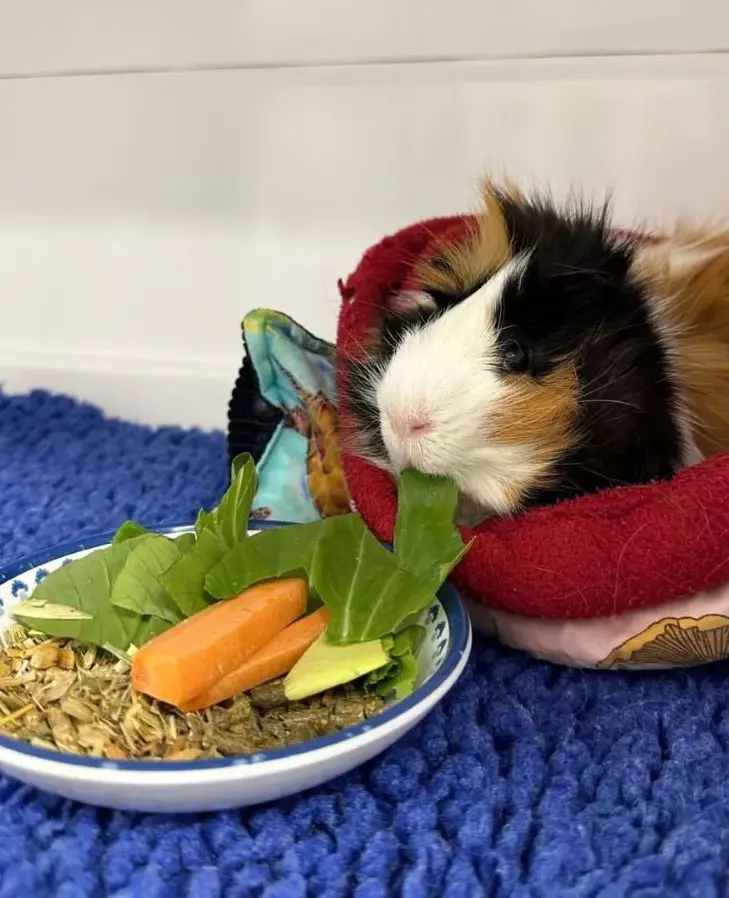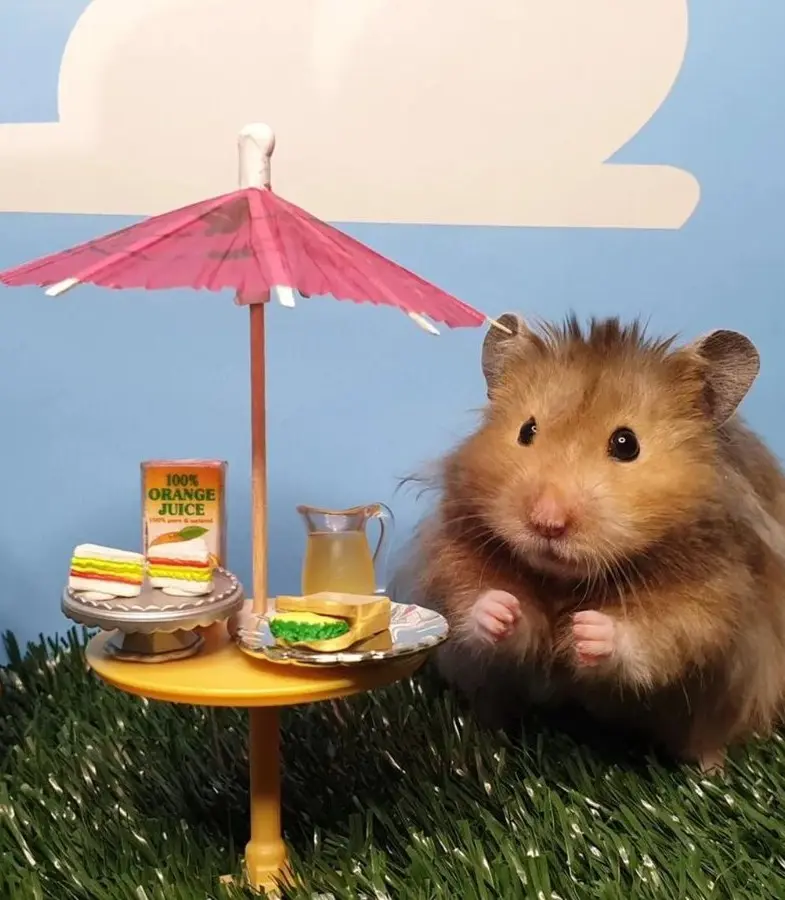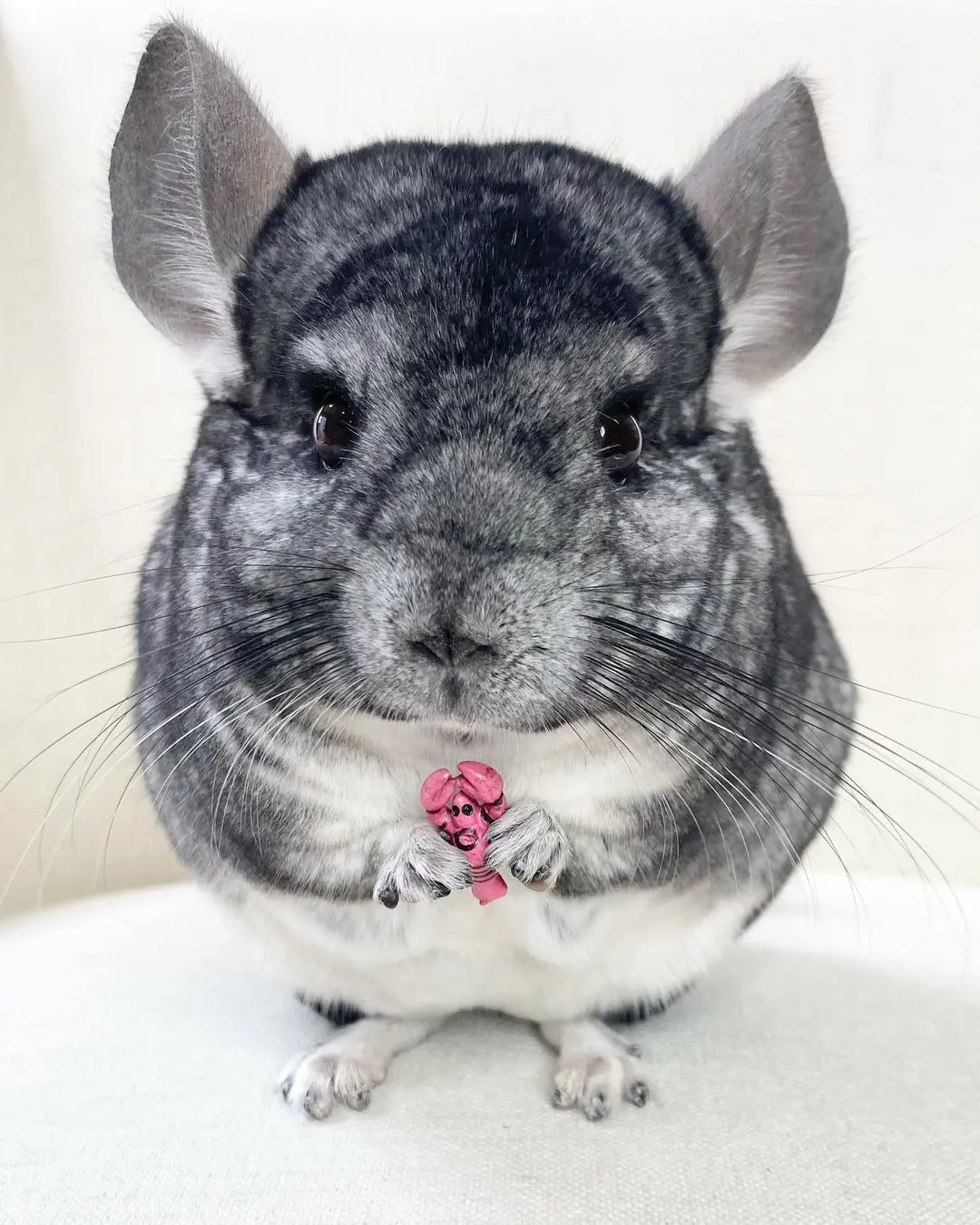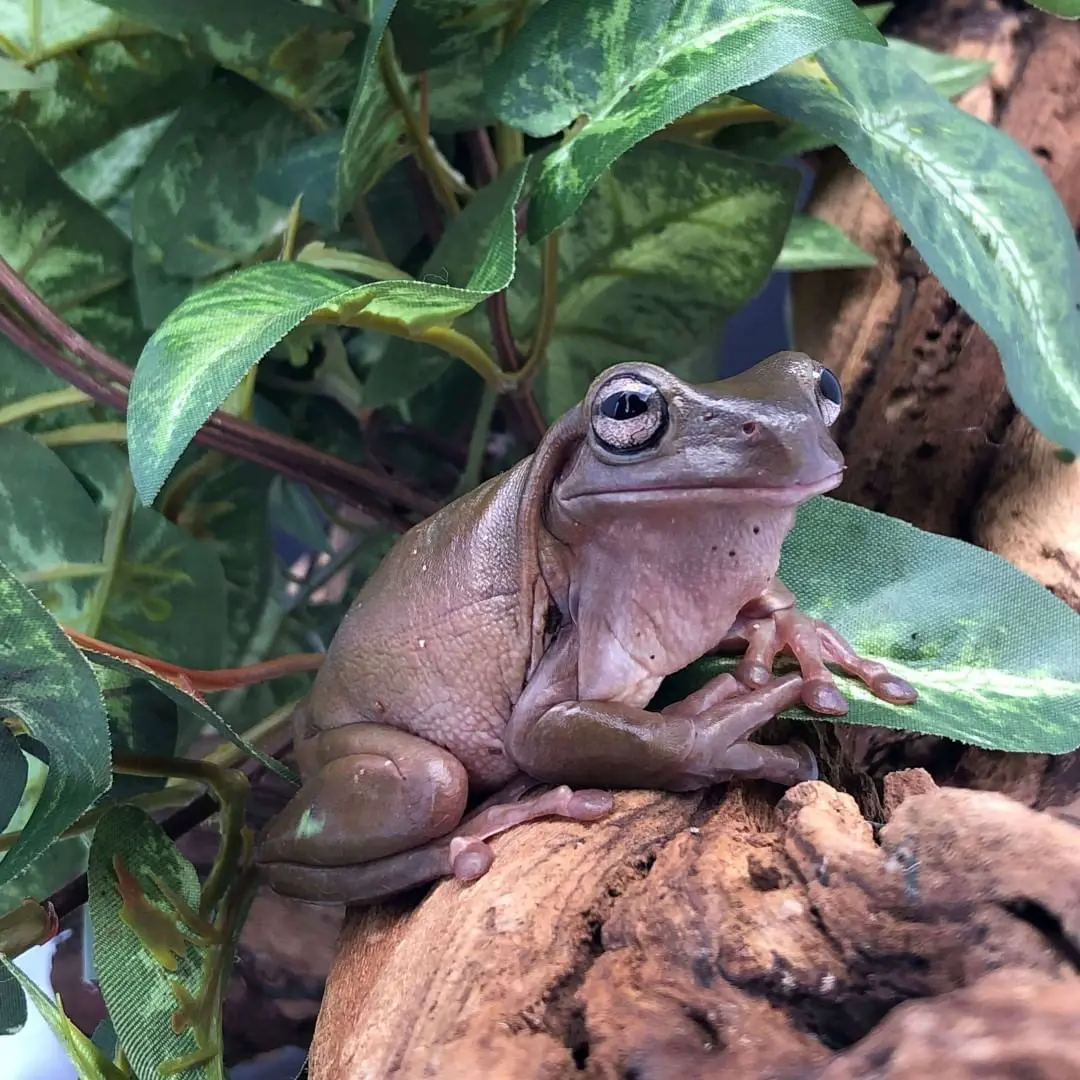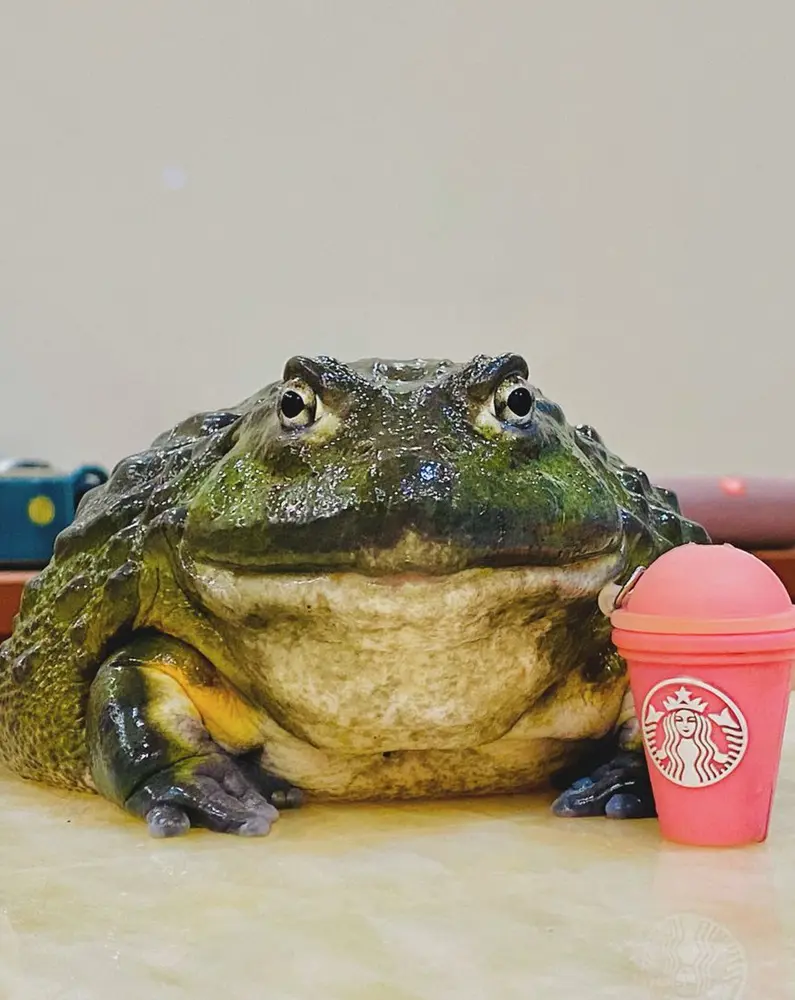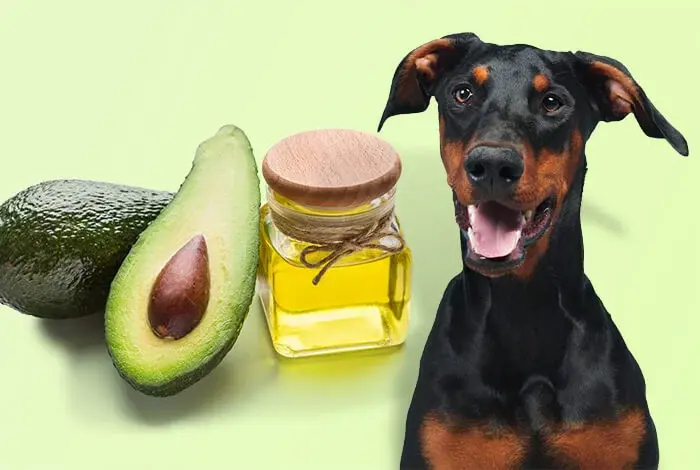What Do Frogs Eat?
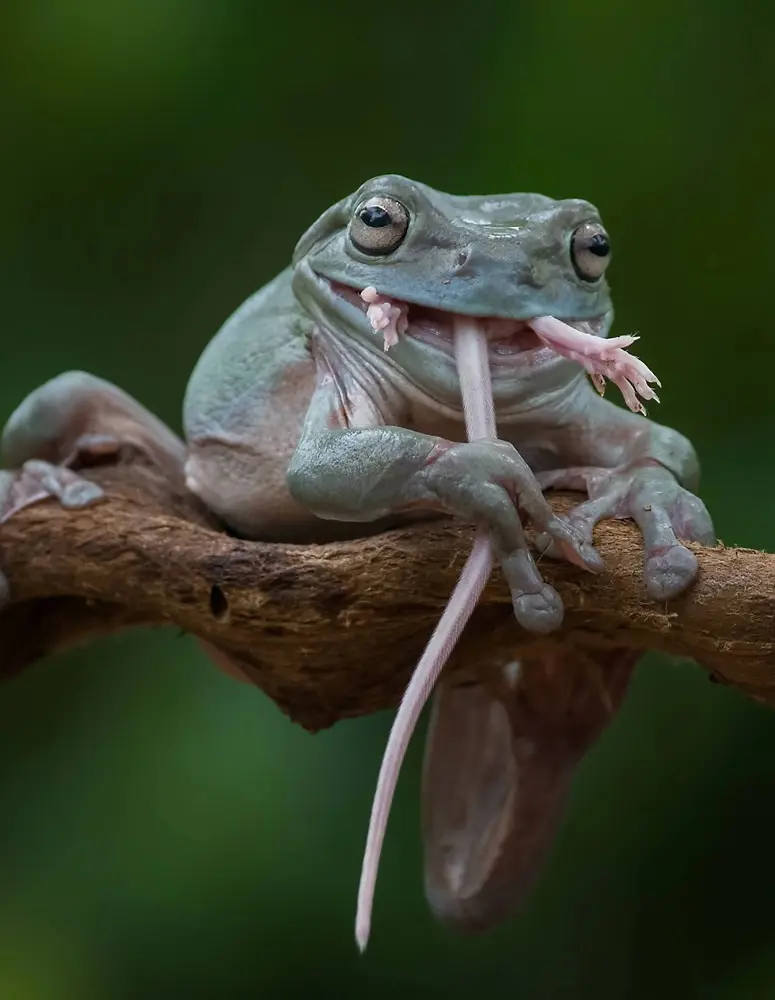
Frogs, with their diverse species and habitats, have a wide range of dietary needs that are crucial to their health and longevity. Their diet can vary significantly depending on whether they are in the wild or kept as pets.
This comprehensive guide will delve into the specifics of what frogs eat, their dietary requirements, feeding practices for pet frogs, common dietary issues, and foods that should be restricted or avoided.
Dietary Needs of Frogs
Frogs are primarily carnivorous and their diet consists mainly of insects and small invertebrates. Larger species may consume small vertebrates. Here is an overview of the general dietary needs for different life stages of frogs:
- Tadpoles: In the early stages of life, tadpoles are mostly herbivorous, feeding on algae and plant material. As they grow, they start incorporating small insects and larvae into their diet.
- Juvenile Frogs: As frogs transition from tadpoles to juveniles, their diet becomes more protein-centric, consisting of insects such as flies, mosquitoes, and small worms.
- Adult Frogs: Adult frogs are carnivorous and consume a variety of live prey. Their diet includes insects, spiders, worms, and, for larger species, small rodents, birds, and fish.
Detailed Breakdown of Frog Diet
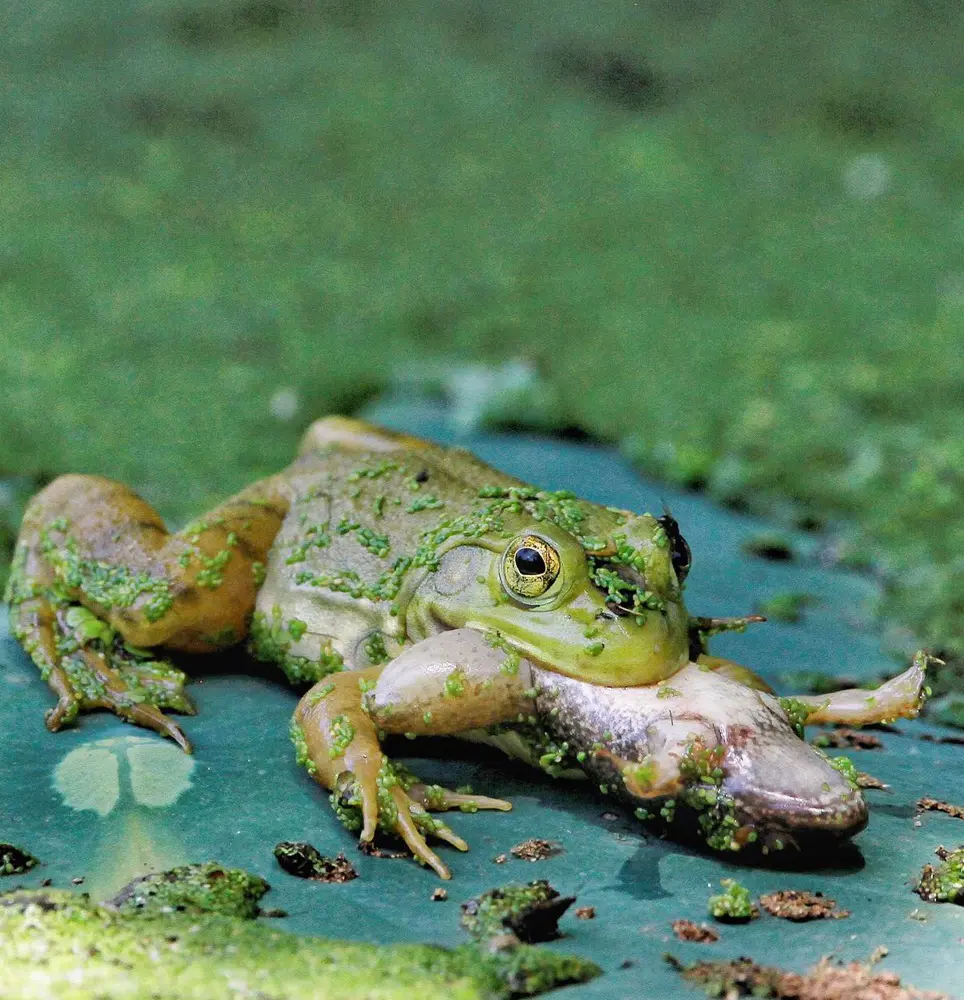
Insects and Invertebrates
- Crickets: A staple in a frog's diet, crickets are nutritious and readily available. They should be gut-loaded (fed nutritious food) before being offered to frogs.
- Mealworms and Waxworms: These are commonly fed to frogs but should be given in moderation due to their high fat content.
- Earthworms: Earthworms are an excellent source of protein and are easily digestible for frogs.
- Flies: Houseflies and fruit flies are good options, especially for smaller species and juvenile frogs.
- Grasshoppers and Locusts: Suitable for larger frogs, these insects are nutritious and provide variety in their diet.
- Roaches: Various species of roaches can be fed to frogs, offering a good source of protein.
- Other Invertebrates: Frogs may also eat spiders, moths, and caterpillars.
Vertebrates (for larger frogs)
- Mice and Rats: For larger species like the African Bullfrog, small mice, and rats can be included in the diet. These should be fed sparingly due to their high fat content.
- Small Birds and Fish: Occasionally, large frogs may consume small birds or fish, though this is less common in pet frogs.
Feeding Practices for Pet Frogs
When keeping frogs as pets, it’s essential to replicate their natural diet as closely as possible while considering their specific nutritional needs.
Frequency and Portion Size
- Juvenile Frogs: These should be fed daily due to their rapid growth and high metabolism. Provide small insects that are easy to digest.
- Adult Frogs: Typically, adult frogs should be fed every 2-3 days. The portion size should be such that the frog can consume it within 15 minutes.
Gut-Loading and Supplementation
- Gut-Loading: Before feeding insects to frogs, they should be gut-loaded with nutritious foods such as leafy greens, vegetables, and high-quality commercial insect diets for at least 24 hours. This enhances the nutritional value of the prey.
- Calcium and Vitamin Supplements: Dusting insects with calcium and vitamin D3 supplements is crucial to prevent metabolic bone disease and other deficiencies. Multivitamin supplements should also be provided periodically.
Feeding Environment
- Live Prey: Frogs prefer live prey as they rely on movement to identify their food. Ensure the prey is of appropriate size—no larger than the width of the frog’s head.
- Feeding Schedule: Establish a regular feeding schedule to monitor your frog’s eating habits and health. Overfeeding can lead to obesity, while underfeeding can cause malnutrition.
Common Dietary Issues in Pet Frogs
- Obesity: Overfeeding, especially with high-fat prey like waxworms and pinky mice, can lead to obesity. This condition can cause a range of health issues including heart disease and decreased mobility.
- Nutritional Deficiencies: Inadequate gut loading and lack of supplementation can result in deficiencies, leading to metabolic bone disease, lethargy, and poor growth.
- Impaction: Feeding frogs prey that is too large or hard to digest can cause impaction, a potentially life-threatening condition where the digestive tract gets blocked.
- Dehydration: Frogs absorb water through their skin, so they require a humid environment to stay hydrated. Inadequate humidity can lead to dehydration, impacting their overall health and ability to feed properly.
Restricted and Prohibited Foods
Certain foods can be harmful or even fatal to frogs and should be avoided:
- Wild-Caught Insects: These may carry parasites, pesticides, and diseases. Always use commercially bred insects to ensure safety.
- Processed Human Food: Foods like bread, processed meats, and dairy products are not suitable for frogs and can cause severe digestive issues.
- Hard-Shelled Insects: Beetles and other hard-shelled insects can be difficult to digest and pose a risk of impaction.
- Toxic Insects: Avoid feeding frogs insects that can produce toxins, such as fireflies, ladybugs, and certain species of ants.
- Large Prey: Prey that is too large can cause choking or impaction. Always ensure that the prey is appropriately sized for the frog.
- Feeding Live Vertebrates to Small Frogs: Offering live vertebrates like mice to small or inappropriate-sized frogs can lead to injuries and stress for the frog.
Specialized Diets for Specific Frog Species
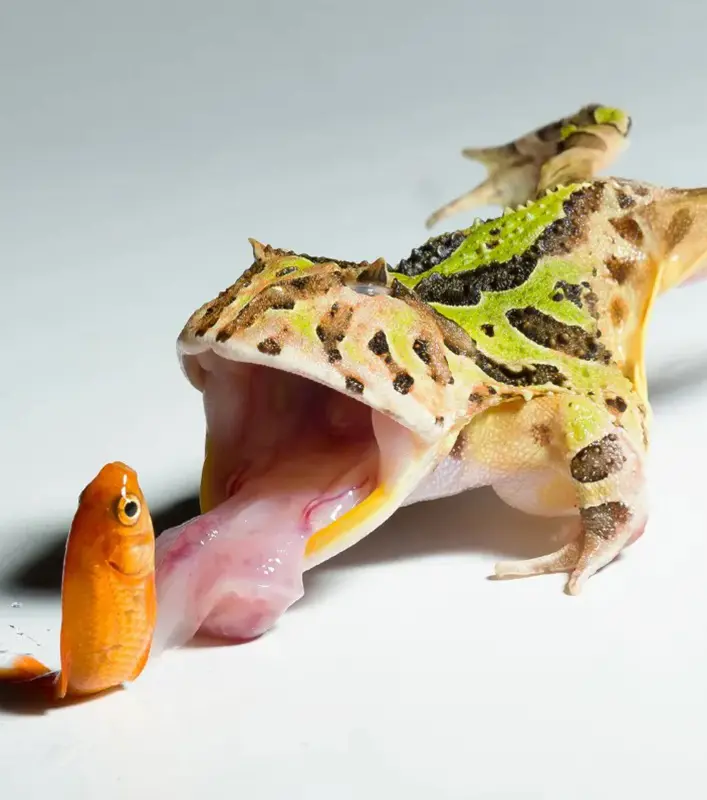
- Dart Frogs: These small, brightly colored frogs require a diet primarily of small insects such as fruit flies, pinhead crickets, and springtails. Their diet should be varied and supplemented with calcium and vitamins.
- Horned Frogs (Pacman Frogs): These large, sedentary frogs eat a range of prey from insects to small vertebrates. They require a balanced diet with regular supplementation to prevent nutritional deficiencies.
- Tree Frogs: Tree frogs, being more arboreal, primarily eat insects like crickets and flies. They need a humid environment and a varied diet to stay healthy.
- African Clawed Frogs: These aquatic frogs feed on a variety of prey including insects, small fish, and invertebrates. They may also eat commercial frog pellets designed for aquatic species.
Safety and Health Considerations While Feeding Frogs
Ensuring the safety and health of frogs while feeding involves several key practices:
- Hygiene: Always wash your hands before and after handling frogs or their food to prevent the spread of pathogens.
- Proper Sourcing of Food: Only use reputable sources for live prey to avoid parasites and pesticide contamination.
- Observation: Monitor your frog during feeding to ensure they are eating properly and not experiencing any difficulties.
- Regular Health Check-ups: Regular veterinary check-ups can help identify any nutritional deficiencies or health issues early.
- Avoid Overfeeding: Provide only the amount of food that the frog can consume in a single feeding session to prevent obesity.
- Adjust Diet with Age: Adjust the diet as the frog ages, moving from more frequent, smaller feedings for juveniles to less frequent, larger feedings for adults.
- Environmental Conditions: Maintain the proper temperature and humidity levels to support the frog’s digestive health and overall well-being.
- Avoid Stress: Minimize stress during feeding by providing a quiet and safe environment. Stress can impact a frog’s appetite and health.
Monitoring and Adjusting Diets
Regularly monitor your frog's health and behavior to ensure they are receiving a balanced diet. Signs of a healthy frog include:
- Active and alert behavior
- Clear eyes and healthy skin
- Regular eating habits
- Appropriate weight and body condition
If you notice any changes in your frog’s health or behavior, consult a veterinarian with experience in exotic pets. Adjusting the diet, improving the feeding environment, and addressing any underlying health issues are critical steps to ensure the well-being of your pet frog.
Do Frogs Drink Water?
Yes, frogs do drink water, but they absorb most of their hydration through their skin rather than by drinking like mammals do. Here’s how you can ensure your pet frog stays hydrated and how to provide water:
Ensuring Your Pet Frog is Hydrated
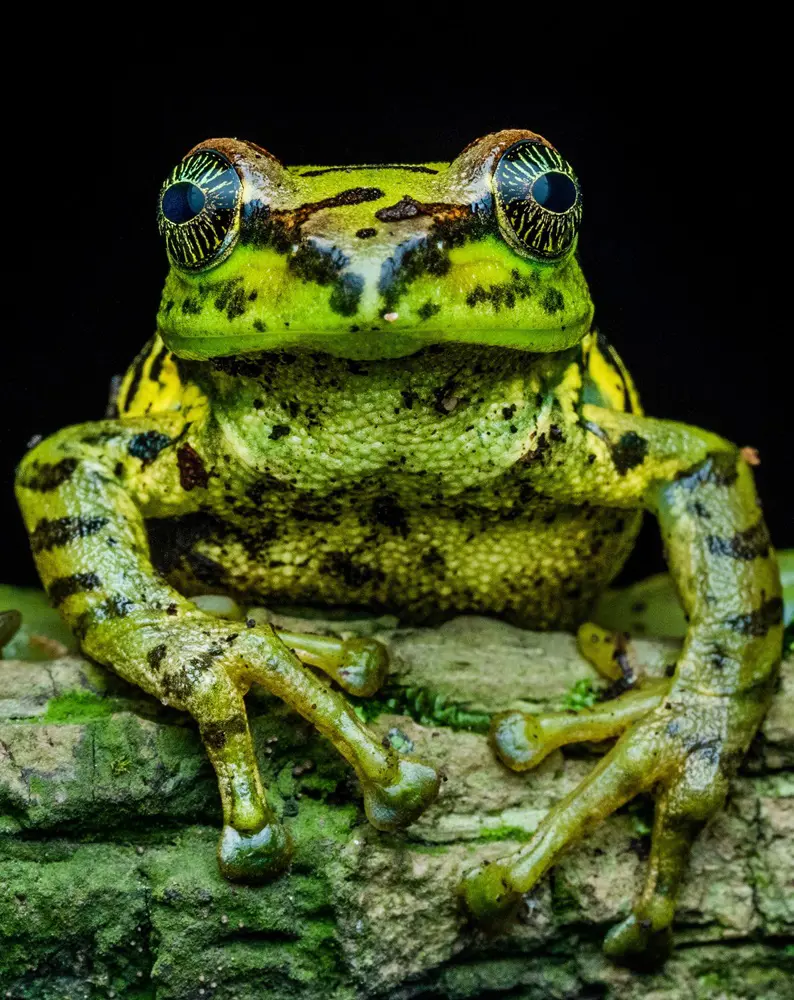
-
Humidity Levels: Maintain proper humidity levels in your frog's enclosure. Most frogs require a humid environment because they absorb water through their skin. Use a hygrometer to monitor humidity levels, which typically should be between 50% to 80%, depending on the species.
-
Misting: Regularly mist the enclosure with dechlorinated water to create humidity and provide water droplets for your frog to lick off surfaces. This mimics their natural environment where they might encounter dew or rain.
-
Water Dish: Provide a shallow, non-metallic water dish filled with dechlorinated water. The dish should be large enough for your frog to soak in comfortably if needed. Change the water daily to prevent bacterial growth and ensure cleanliness.
-
Observation: Watch your frog’s behavior. If it appears lethargic, its skin looks dry, or it remains in the water dish for extended periods, these could be signs of dehydration.
Feeding Water to Your Pet Frog
-
Spraying: Use a spray bottle to mist the enclosure with dechlorinated water at least once or twice a day, depending on the humidity requirements of your frog species.
-
Soaking: Some frogs may prefer to soak in a shallow water dish. Ensure the dish is non-toxic and large enough for the frog to comfortably sit in without risk of drowning.
-
Avoid Water with Chemicals: Use only dechlorinated water for misting and in the water dish. Chlorinated water and water containing chemicals can harm frogs.
-
Monitor Consumption: While frogs mainly absorb water through their skin, some species may occasionally drink from the water dish. Ensure the water is clean and replenished regularly.
Top Lists


